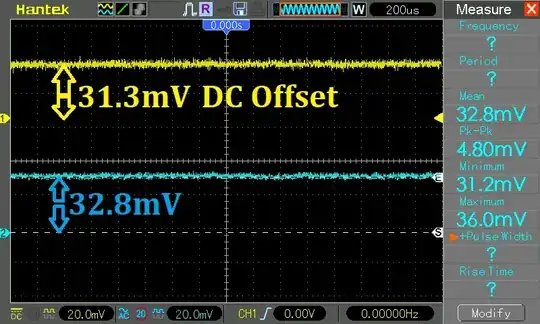Shown below is the display of a 2-channel Digital Oscilloscope, with no probes connected to their respective inputs. Note that both channels are set to maximum sensitivity of 20mV/square.
Shown at extreme left are indicators showing where a zero-volt trace would display. As you slide vertical position up and down, these indicators move vertically. Each channel has its own arrow-like indicator (Ch.1 in yellow, Ch.2 in blue).
At the right, the oscilloscope has made measurements of Ch.2 (Blue):

I have set cursors on channel 2 in an attempt to verify voltage measurements. Cursor measurement agrees with the Mean measure of 32.8 mV.
With no voltage going into the 'scope, you'd expect to see a display of zero volts. Instead, this oscilloscope displays an internal DC offset voltage of about +32 millivolts.
This measurement was made with the DC/AC/GND input selector set to DC
When set to GND, zero volts was displayed.
For this oscilloscope, the GND selector gives a display of zero volts as indicated by those extreme-left arrow indicators.
One wishes to ask, "Where does zero volts display?"
The extreme-left indicator displays zero volts at a different vertical position than the waveform display - this difference is a D.C. offset. So which is true zero: the indicator, or the displayed waveform?
If I were to make a critical measurement, I would subtract this DC offset of 32 mV. from every measurement this oscilloscope makes.
TLDR: For this oscilloscope, the GND position of the DC/AC/GND selector is useless, because those extreme-left channel indicators give a more-immediate display of the same information.
The GND position is a legacy left-over from older analog 'scopes that gave no indicator where zero volts would display.
After this measurement was taken, the oscilloscope was put through a self-calibration.
After self-calibration, a similar DC-offset measurement was made...
That DC-offset was calibrated out: mean voltage showed either 0.00 or +800 uV. With no input voltage, the zero-indicator and displayed waveform agreed.
A reminder to other digital 'scope users: do a self-calibration!
